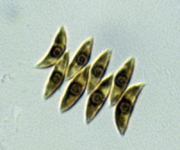


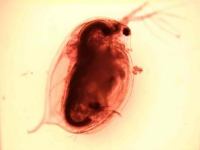
AEW plankton laboratory
Miquel Lürling & Wendy Beekman
In the plankton laboratory we prepare algal and zooplankton growth media, maintain our cultures, construct flow-through vessels, measure our samples and determine the taxonomic composition of plankton in field samples.



In Lab I the growth media are prepared and sterilized; glassware is cleaned and washed. Lab II is equipped with 3 dissecting microscopes, 2 light microscopes of which one being connected to a Leica Quantimet 500MC image analyzer and one Reichert inverted microscope. Lab III contains an electronic particle counter, HYTOPAM phytoplankter analyzer and a laminar flow cabinet.
In our walk-in climate controlled rooms we have chemostats with algae and bitrophic systems with algae and zooplankton. Our algal stocks and zooplankton cultures are maintained in a separate room.
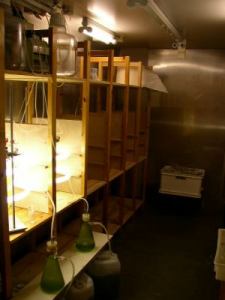
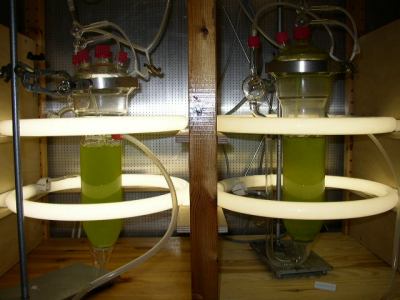
A walk-in room with continuous flow vessels with the green alga Scenedesmus.
Some algal stock cultures
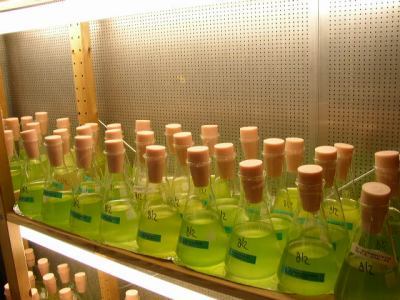
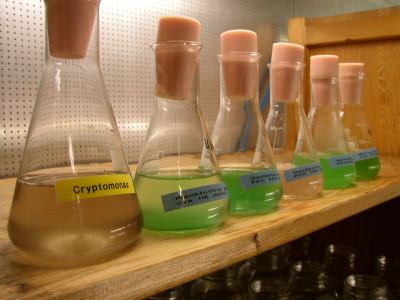
The phytoplankton organisms we currently have in culture are:
Green algae: Ankistrodesmus falcatus, Chlamydomonas reinhardtii, Chlorella vulgaris, 12 Desmodesmus strains, Monoraphidium minutum, Raphidocelis subcapitata and 20 Scenedesmus strains.
Cyanobacteria: 12 Microcystis aeruginosa strains, 4 Planktothrix agardii, one Anabaena flos-aqua and Synechococcus elongates.
Cryptomonas sp.
The zooplankton species currently in culture are:
The rotifer Brachionus calyciflorus and the cladocerans Daphnia galeata × hyalina, D. magna, D. obtusa and D. pulex.
All of the organisms are cultured in artificial media according to individual standard culturing conditions (ISCC), which are based on years of expertise with the organisms.
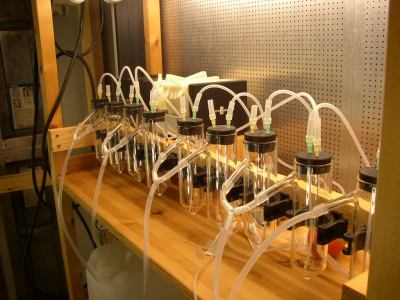
Small flow-through units
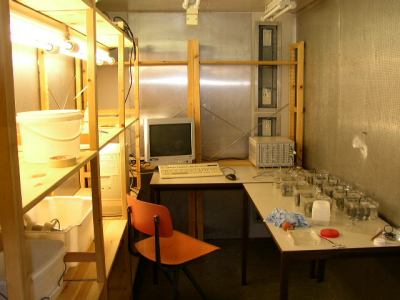
Multi-species Freshwater Biomonitor
Ecotoxicology
The laboratory is fully equipped running ecotoxicological assays:
We offer a whole range of standard and expanded toxicity tests, which are meant to determine the toxicity of test compounds to the receiving water's aquatic life with emphasis on planktonic organisms.
We include important steering biological factors in assays such as competition and predation thereby placing toxicity in a relevant ecological context.
We combine highly sophisticated tools for measuring multiple endpoints with the expertise of excellent researchers of the Aquatic Ecology & Water Quality Management Group of the Wageningen University.
We are flexible in adjusting tests to meet your demands from multiple stresses to different organisms to multi-trophic interactions.
Standard tests
Short-term exposure (24 – 96 hours) of selected organisms to a test compound with the objective to estimate the concentration that produces a detrimental effect. Endpoints are for:
Algae:
- Biovolume based growth rate
- Particle/cell number based growth rate
- Chlorophyll-a based growth rate
- Photosynthesis efficiency
- Morphology
Zooplankton:
- Mortality
- Feeding activity
- Biomass
- Swimming behaviour
- Long term exposure (>5 days) is mainly applied for zooplankton estimating the concentration that produces a harmful effect on somatic growth, development, reproduction and population growth rates.












